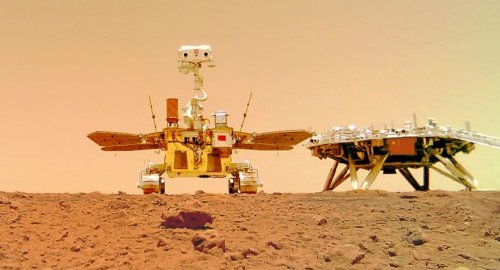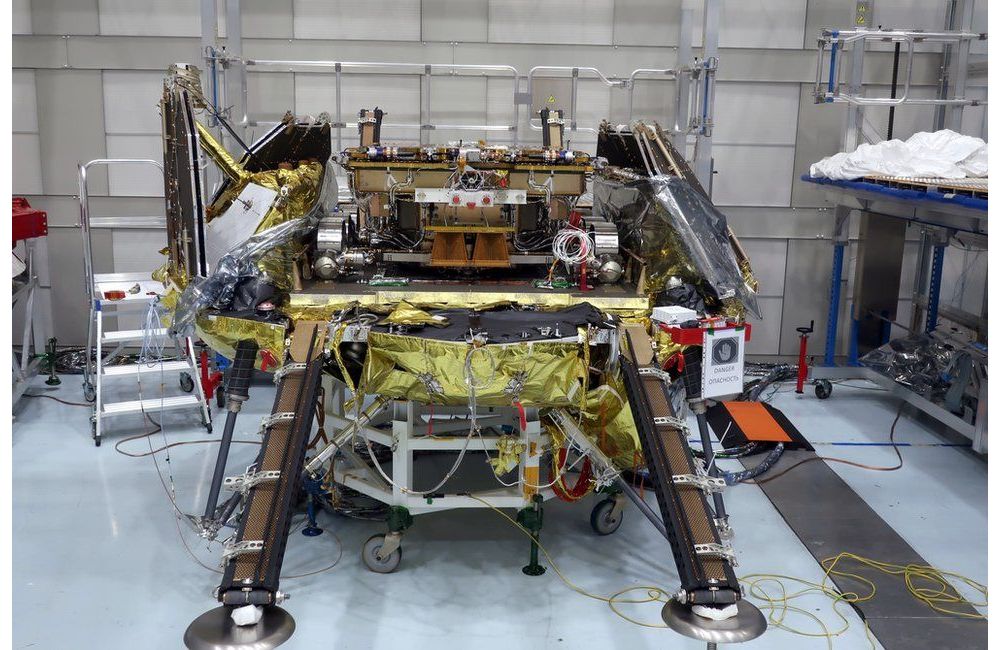
China's rover Zhurong snapped an epic self-portrait on the Red Planet

- 14-06-2021, 17:30
INA – Sources
China's Zhurong rover, which landed on Mars on May 14, has sent a new batch of images to Earth — including a "family photo" featuring the rover together with its rocket-powered landing platform posing for a camera on the rock-covered surface.
The rover took this selfie by dropping a camera attached to its belly about 10 meters (32 feet) away from the landing platform, then positioning itself next to the landing platform, Chinese space officials said. The camera wirelessly transmitted the picture to the rover, which then sent it to Earth via the Tianwen-1 orbiter.
The China National Space Administration (CNSA) released the image together with a 360-degree panoramic view of the landing site that Zhurong took with its navigation terrain camera while it was still atop the landing platform. The CNSA also released a photo of the landing platform taken from about 20 feet (6 meters) afar.
The images show the flat terrain of the huge Martian plain Utopia Planitia covered with small rocks.
The 530-lb. (240 kilograms) Zhurong rover, named after an ancient fire god from Chinese mythology, is part of China's Tianwen-1 mission, which launched in July 2020 and arrived in Mars orbit this past February. On May 14, Zhurong and the landing platform separated from the Tianwen-1 orbiter and touched down, pulling off China's first-ever Mars landing.
In addition to high-resolution cameras, the rover is fitted with a subsurface radar instrument, a multi-spectral camera and surface composition detector, a magnetic field detector and a weather monitor.
The rover is expected to spend at least 90 days mapping the area, searching for signs of water ice, monitoring weather and studying the surface composition.
The Tianwen-1 orbiter, which relays data from Zhurong but also gathers scientific data about the planet's surface and atmosphere, is expected to operate for at least one Mars year, which is 687 Earth days
Gaza Health Ministry Announces New Death Toll for Zionist Aggression
- International
- 06:04
Al-Maliki: Iraq Managed the Electoral Process Smoothly
- politics
- 05:18
Al-Sistani: Tomorrow, the 29th of Ramadan
- Local
- 25/03/29
Al-Amiri warns of any war between Iran and the US
- politics
- 25/04/01












